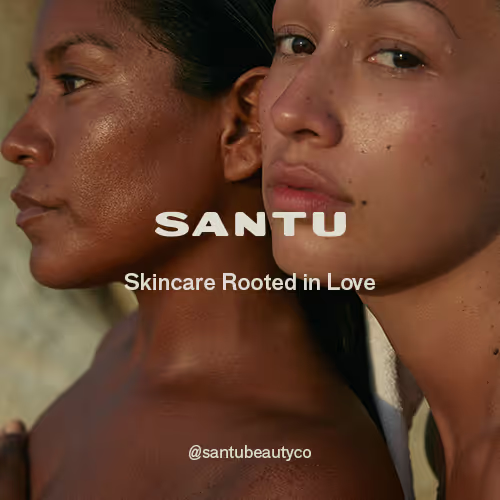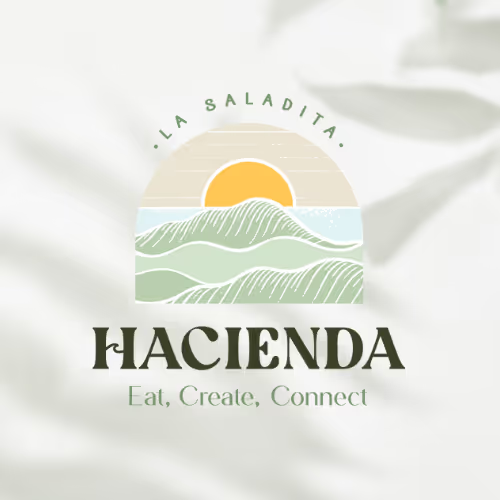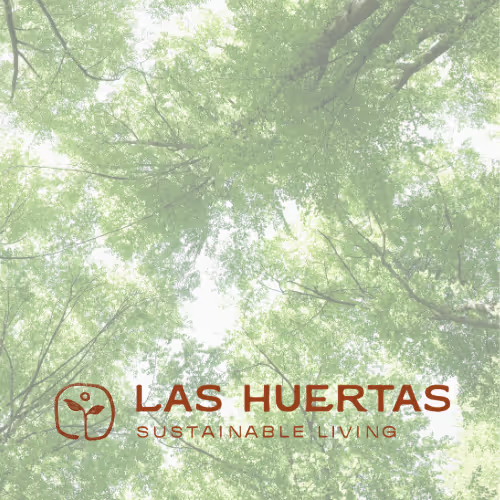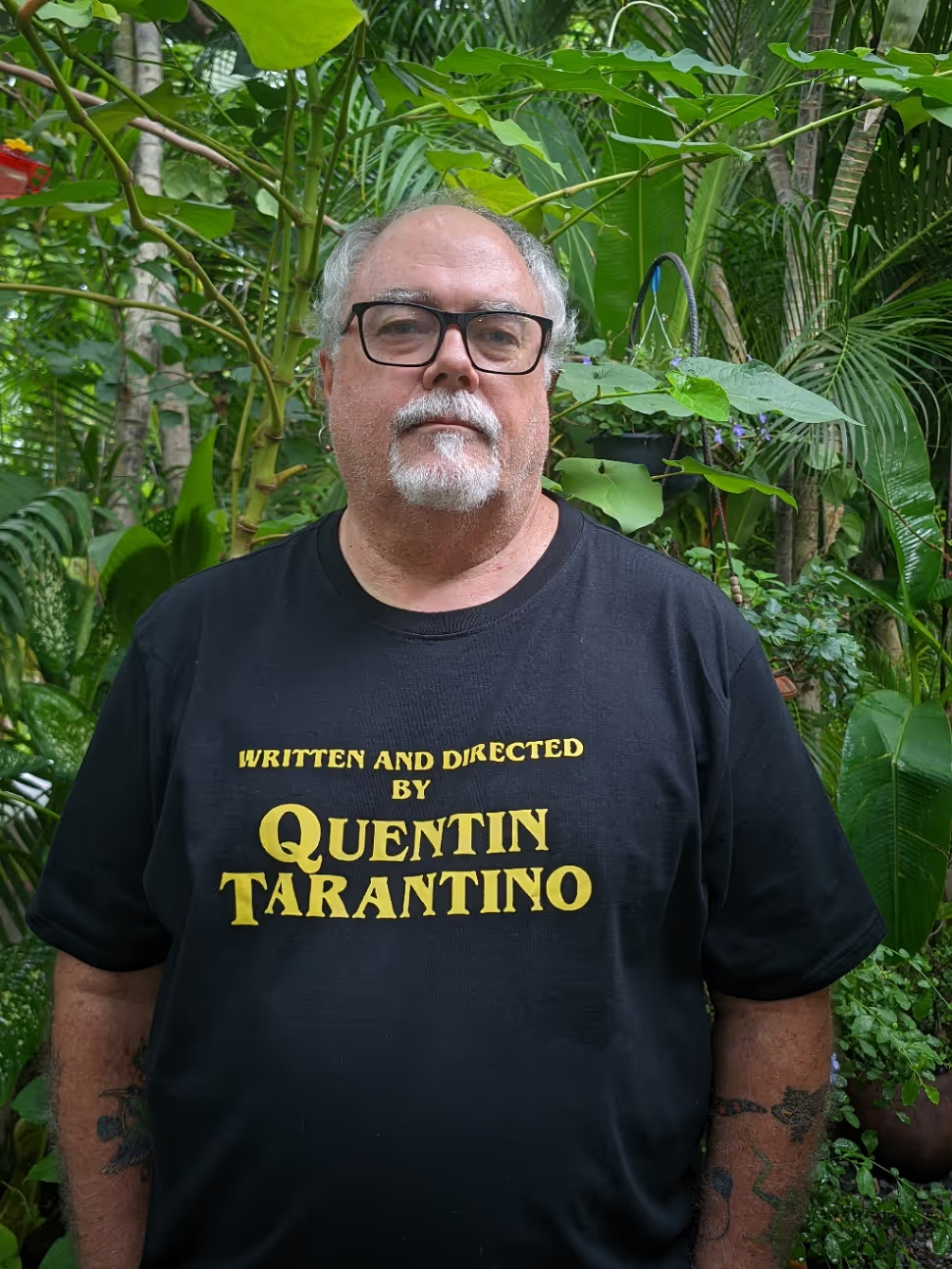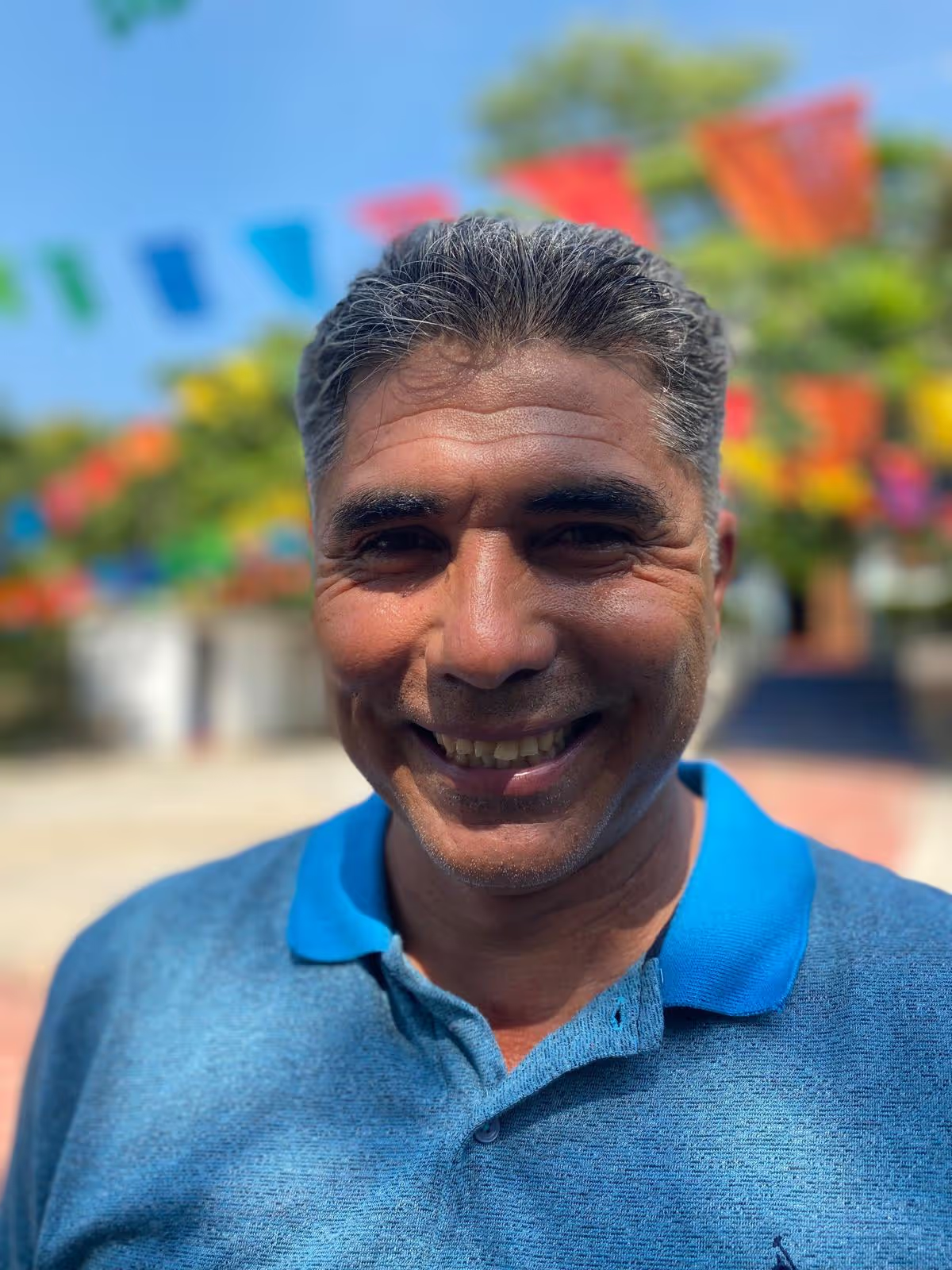Ligita Lapé: Following Cacao
A world traveler comes to Troncones and stays to share her passion for chocolate-making
Cacao. It’s “kuh·kau”, a tree, native to South America, that produces a pod containing seeds, or “beans”, which for over 7000 years have been harvested, heated and transformed into beverages and foods, liquors and chocolates. Its scientific name, Theobroma cacao, is Greek for “food of the gods”, a reflection of the bean’s place in Mexico’s Mayan and Aztec culture where it was considered a gift from the gods, where its use was typically reserved for special occasions, weddings and ceremonies. Among many of Mexico’s indigenous tribes, cacao as a dried bean became a currency, its value and status plainly understood. Cacao. It’s nourishment. It’s medicine. It’s an essential. It’s a luxury. It’s comforting. It’s over-stimulating. It’s earthly. It’s sacred. It’s everyday. It’s special. It’s complicated. Ligita Lapé and her Troncones-based brand Tribu Del Cacao, caught my eye on Instagram before I happened to meet her for the first time at Jahvé, the vegetable and fruit store just south of the T. Ligita knows the complexities of cacao first-hand, as a maker, artist and brewer and as someone who’s sure cacao speaks to her, as a guide, a co-conspirator and a source of inspiration. We sat down together in her treehouse-like apartment in early September and talked about how she was drawn to cacao’s magic.
%201.17.25.avif)
LOT: How did cacao become part of your journey?
LL: I left Lithuania when I was 19 years old. I’m now 34, so nearly half of my life I’ve spent traveling, moving around, from country to country, exploring, learning different skills. Four years ago, I made my first trip to Mexico. I was supposed to come here with a boyfriend, but we split up one week before the trip, so I came to Mexico with a broken heart and everything reflected that back at me, so I didn’t like Mexico then. I continued my travels and got connected in Costa Rica where I ended up working as a chef, cooking vegan food. After a while, I thought, okay, my heart’s healed, I’m going to give Mexico another chance.
The second time I came to Mexico is when I met cacao. I was volunteering in a community in Oaxaca where they grow a lot of trees, some of the trees were cacao. I’d never seen a cacao tree before, but I knew cacao is where chocolate comes from and I liked chocolate, crappy chocolate with lots of sugar and lots of milk. The first time I tried pure cacao, I ate a lot of beans, fresh beans. For some people, eating fresh beans can cause a stomach ache, but I was fine. At some point, I drank a lot of cacao, too, without knowing its effects. I didn’t know anything. In the night, I woke up and I felt like a huge tree was wrapping its roots around my body. I thought, “I’m spiked, I’m tripping” because I was having this vivid experience. I couldn’t go back to sleep. I had these strange sensations, with a lot of emotions, sadness and happiness, everything. The experience felt more sacred than psychedelic. It was definitely heart-opening. In the morning, I went to speak to the people in the community and one of the leaders said, “Wow, it must have been the cacao. It’s not psychedelic, but it could be you have some kind of connection to this tree. Follow it.” That was quite funny to me, I mean, how do I follow a tree?
LOT: What makes cacao sacred, as opposed to any other plant?
LL: I think everything is sacred. It’s not just cacao. I think different people find different tools and, in the end, every plant has energy and every plant can show you something. Cacao spoke to me in a way that was mysterious, curious. It talked to me and I got the language. I’m still learning more about cacao; it’s a wonderful tree.
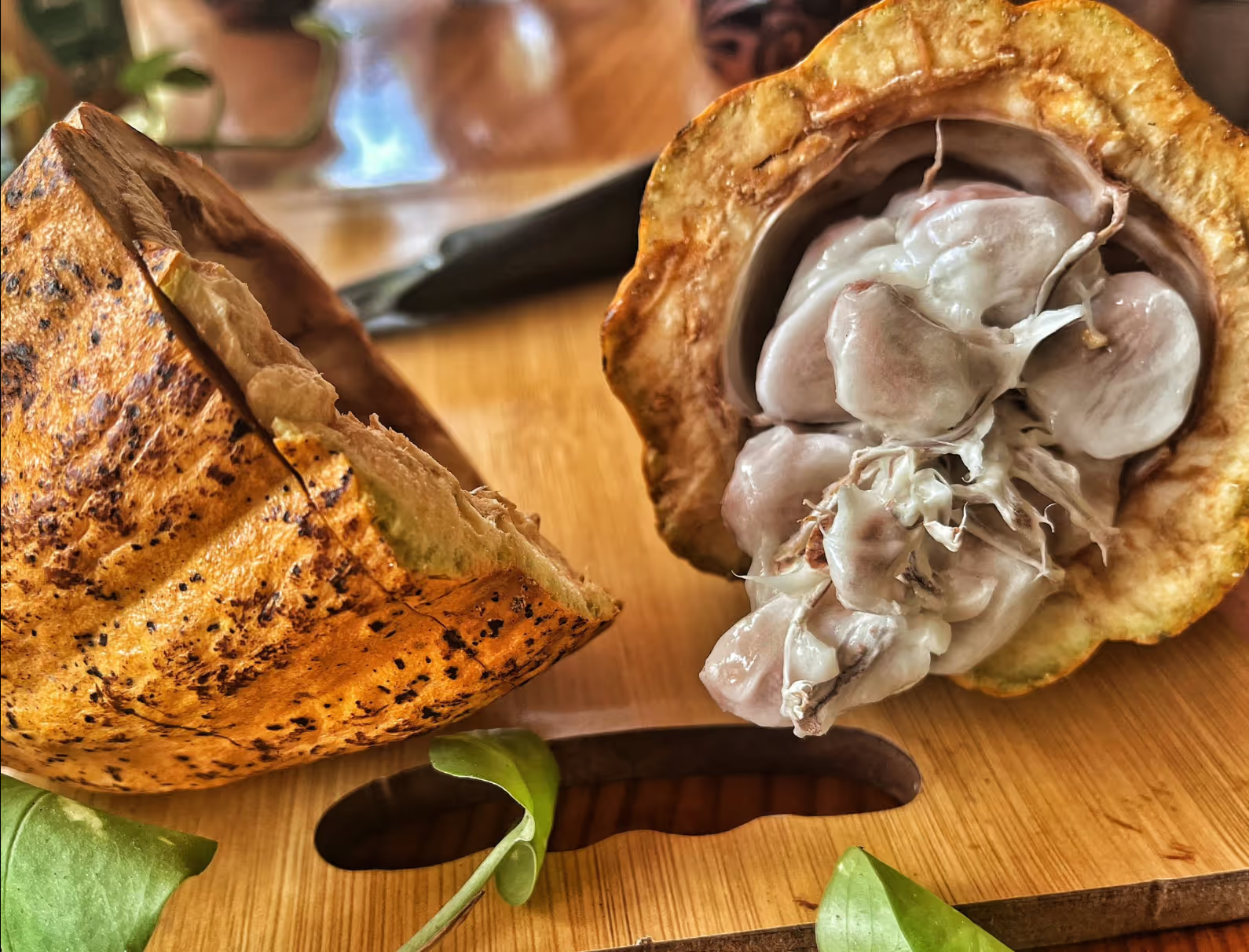
LOT: Is there a Guerrero cacao?
LL: Yes, there’s a Guerrero cacao, but I don’t have it right now. Most of the cacao in Mexico comes from Tabasco and Chiapas. That’s where most of the beans I’ve been working with are from. I’ve been looking for the bean in Guerrero and tomorrow I’m going an hour up the mountain from Zihuatanejo because I’ve heard there are a variety of beans there, and that they’re fermenting the beans. From what I’ve seen in Mexico, most people wash their beans, meaning that they don’t go for fermentation process. They wash the pulp and then they dry the beans. People are used to it. When it’s something you’re used to, you don’t really question it, like your grandmother’s secret recipe. But, as a chocolate maker, I know fermentation gives flavor so I prefer the fermented bean. I’m looking forward to seeing what I find on the mountain.
LOT: I've seen some of your videos online and I love watching your process. Can you describe how you prepare your beans?
LL: First, I toast them and then separate the shell with a hand grinder. Then I use a ventilator to separate the shell, same as what people do with sesame seeds, blow air and sift away the shells. Then I grind the beans with the same hand grinder, leaving me with a coarse cacao that looks like powdery nibs, with all the natural cacao butter still it in it. Then I put that into my bigger grinder, an electric grinder with two granite stones, and what it does is grind that mix in a slow motion. Depending which chocolate I’m making, I let it grind for sometimes 50 hours. That releases the oils from the bean and leaves me with what I call “liquid gold”. That’s when I put in the piloncillo [pure, unrefined sugar made from sugar cane, commonly referred to as Mexican brown sugar]. I work with piloncillo because it’s Mexican, it’s local, it’s affordable and it’s unrefined which means it has antioxidants and minerals. And it has flavor. I love piloncillo.
What comes out of the grinder is like a drink. It’s chocolate, melted, because the grinding temperature can get to around 50 degrees Celsius. When I put the sugar, the piloncillo, the chocolate is “done”. I play with the percentages. Sometimes I do 75 percent cacao and 25 percent sugar. Or, 80 percent cacao and 20 percent sugar. That’s what it means with percentages on a chocolate.
LOT: Where did you learn this process?
LL: In Costa Rica, everything kind of mysteriously aligned there. After my experience in Oaxaca, I went back to Costa Rica, back to being a chef in a retreat center. The question stayed with me, what should I do with cacao? At first, I thought, okay, I’m going to drink lots of cacao, I’ll be a cacao consumer. Every time I drank cacao, I would think, like, so what should I do? I had to wait almost two years until cacao told me.
I was cooking in the kitchen one day, thinking, “Wow, as a chef, I am an alchemist because, in the end, I transform one thing into another.” I asked myself, “What is the transformed bean?” I realized the answer was chocolate, that I should learn how to make chocolate. I got an instant “Yes!” from that, an inner-looking thing. Shortly after that, I went on a camping trip, to the Caribbean coast, to where most of Costa Rica’s cacao comes from. I decided to go to one of the local chocolate shops in town. They had chocolate from maybe ten different producers. I decided to buy five chocolates and the winner would be the person I wanted to connect with. I tried all five and one chocolate just melted my heart. It was a vegan milk chocolate. It didn’t have a lot of cacao but I connected with it straight away. I went back to the chocolate shop and asked who made that particular chocolate, that I wanted to meet those people. It turns out they lived nearby on a permaculture cacao farm. I found their website and they had a cacao tour the next morning. After the tour, I went to the farm’s store and the instant I entered into their kitchen I knew this is where I’m going to learn. There was a Scottish woman in the kitchen, a total wizard, an herbalist who knows everything about cacao, who’d worked with cacao for many years. We spoke for a while and I said to her, “I love cacao and I want to be a chocolate maker, like you.” She said, “I do internships. Come back to me when you finish your work as a chef and we’ll do the internship.” That's where I started learning chocolate-making.
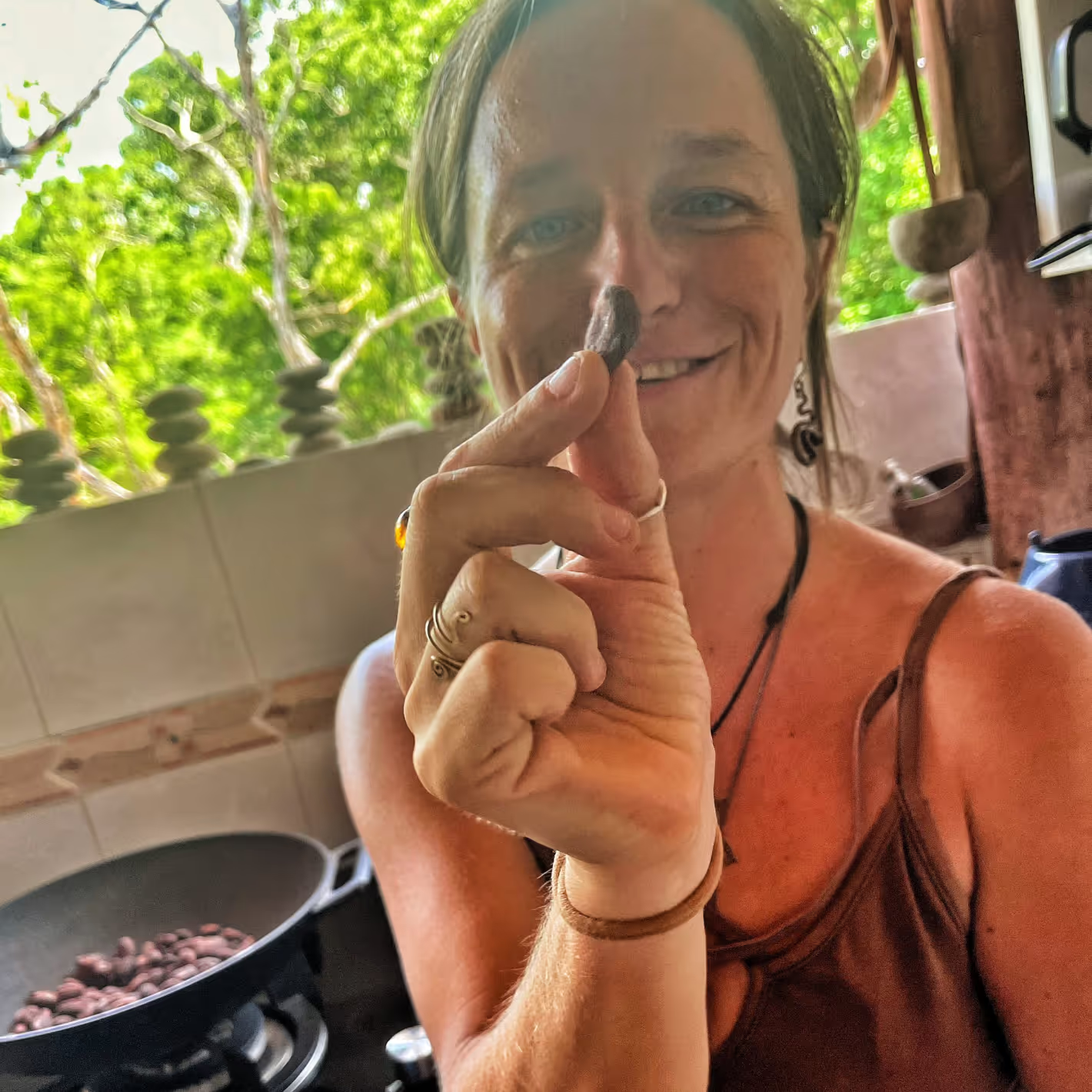
LOT. How has your chocolate-making become a canvas for your creativity?
LL: I feel like an artist every time I make chocolate but, truthfully, I felt like that whenever I made food as a chef. I feel like that doing almost anything, like anything I do can become art. With the chocolate-making, I transform the bean and there are so many little details, so many moments where I have to be careful, where I have to have a certain touch. For example, after the refiner machine and the piloncillo, there are other processes still. I have to do the tempering, playing with the temperatures. Sometimes it comes out not the way I want it, not the flavors I want. I went to a chocolate workshop in Oaxaca and afterwards I asked, “How is it that your chocolate is so good?” Their answer led me to realize I have to get to know my beans better, so intimately that the flavor comes by itself. I do “extras”, toppings like cardamom and toasted almond.
People love it, but I’m more interested in the subtle flavor of the bean itself. That’s why I love pure cacao. Whenever I try a new producer, first I make a batch of pure cacao just to learn their bean. How does it taste? How does it feel? Is it bitter? Is it sweet? So, for me, this is an art, playing with the flavors within the bean.
LOT: But isn’t your experience always going to be your experience, and another user’s experience their experience?
LL: Absolutely. This work with cacao is a big teaching about letting go. I learned being a chef that what I make isn’t for everyone. Not everyone is going to resonate with what I do, even though I put my passion, my love, into everything I do. I can say whatever I do, I do it passionately. It’s just my personality and it has been a huge journey to let go of how I want people to feel, how I want people to be, whether they’re able to find the magic in the cacao, whether it opens their heart, whether it lets them see with more detail. I’ve learned to think, “Wow, let go. Your experience is your experience. Theirs is theirs.”
As an artist, it’s powerful when I let go because when I get a critique, somebody saying, “I don't like it”, I never take it personally anymore because I know that it’s not up to me. Doing that lets me see which people cacao wants me to connect with, which places I need to be. It’s not just the chocolates for me. I put so much attention to listening to this plant that I’ve learned to ask cacao to go with me, everywhere I go, especially when I collaborate or sell. It’s everything for me.
LOT: Would you say cacao is your “higher power”?
LL: No, I have this power within myself. Everything is a tool or an ally or a teacher, and I don’t want to give my own inner power to anything, even cacao.
LOT: Do you hand-draw your packaging?
LL: It's printed from my hand-drawn designs, although I do write the flavors and ingredients by hand on each individual package. That’s another aspect of art in my work with cacao.
LOT: Where can people find your chocolates these days?
LL: In the high season. I’m at the market at Tres Mujeres in Troncones on Thursdays and occasionally I’m at EcoTianguis in Zihuatanejo some Saturdays. I also sell from Vegan Ruby’s in Zihuatanejo and Café Corazon in Troncones. In low season, I do a lots of home deliveries and work with private clients.
LOT: Do the bars need to be refrigerated?
LL: Yes, they do. When I’m out selling, I keep them in a cooler that’s close by.
LOT: How many chocolate bars are you producing on a regular basis?
LL: In the high season, I’m making something like 40 to 80 chocolates every week. Maybe now [early September] I would say I make 40 chocolates a week, but that depends because sometimes I have big orders.
LOT: Everything’s all vegan? No, no animal product. Right?
LL: Yes, they’re vegan because I’m vegan.
LOT: Any plans for future workshops, collaborations, tastings or markets?
LL: Absolutely. That’s how I want to expand. I’m about to start hosting a few three-hour “Chocolate Workshops” at my home in Troncones in small, intimate groups and I will be sharing a lot of educational and practical information about cacao at retreats in Troncones. I want to share what I’ve learned and I want to collaborate with people. I really would love to do something with journaling, arts and cacao, and serving cacao with music and dance, because cacao is a plant that helps you to open up in a lot of expressive ways. It helps for creativity, helps for writing, helps for drawing. It helps in moving the body. There are so many expressions of cacao.
LOT: Cacao ceremonies. It’s a sort of buzzword right now. “Come to my cacao ceremony.” What do you think of that? Oh, I can see by your face.
LL: I don't like it. Maybe it’s a little bit too critical and judgmental, but I feel conflicted about that word. When I travelled to Tabasco, looking for my beans, I came across a Mayan elder everyone called Abuelo Efren. He is known as a “cacao guardian”. While we were together, I asked him, “What do you think about cacao ceremonies?” He said, “It is marketing. You can use cacao for a ceremony, but there is no such thing as ceremonial cacao. It just doesn’t exist. It’s pure marketing.” He later said, “Traditionally, cacao is used in two annual ceremonies, one to give gratitude and the other to ask for forgiveness. It looks far off from the Mayan cacao ceremonies advertised in Tulum.”
In Costa Rica, I got to know the Bribri, one of its last indigenous tribes. Among the Bribri, only the women are allowed to work with cacao. If you said this to Abuelo Efren, he might shake his head. That’s the thing, cacao doesn’t have fixed rules, except maybe respect and listen to the plant. I have a hard time with the word “ceremony”. It triggers something within me I need to look at for myself. Maybe it’s the idea that through a single cacao ceremony anyone can be changed forever or made new. Or, maybe, it’s because I associate cacao ceremonies with commercialization. It brings to mind the brutality of the cacao harvests in Africa where children are doing the work, where child labor benefits local farmers and huge conglomerates like Nestlé and Hershey’s. Anyway, it’s something I need to look at, so I can create peace around it. People seem to like cacao ceremonies.
LOT: One last question. How has your chocolate making connected you to Troncones?
LL: I came here three years ago for the first time, to volunteer for Surfer for Strays, and I came back again to volunteer for Patti Lilly, helping her with her kombucha. This time I came specifically to make chocolates. I chose Troncones because I love the ocean here and the beaches. I like our village life. Even though it’s hard sometimes, I’m receiving such beautiful support and appreciation. I keep following cacao and I keep hearing, “Your chocolate makes me feel so good.” For me, that’s where the ceremony happens.
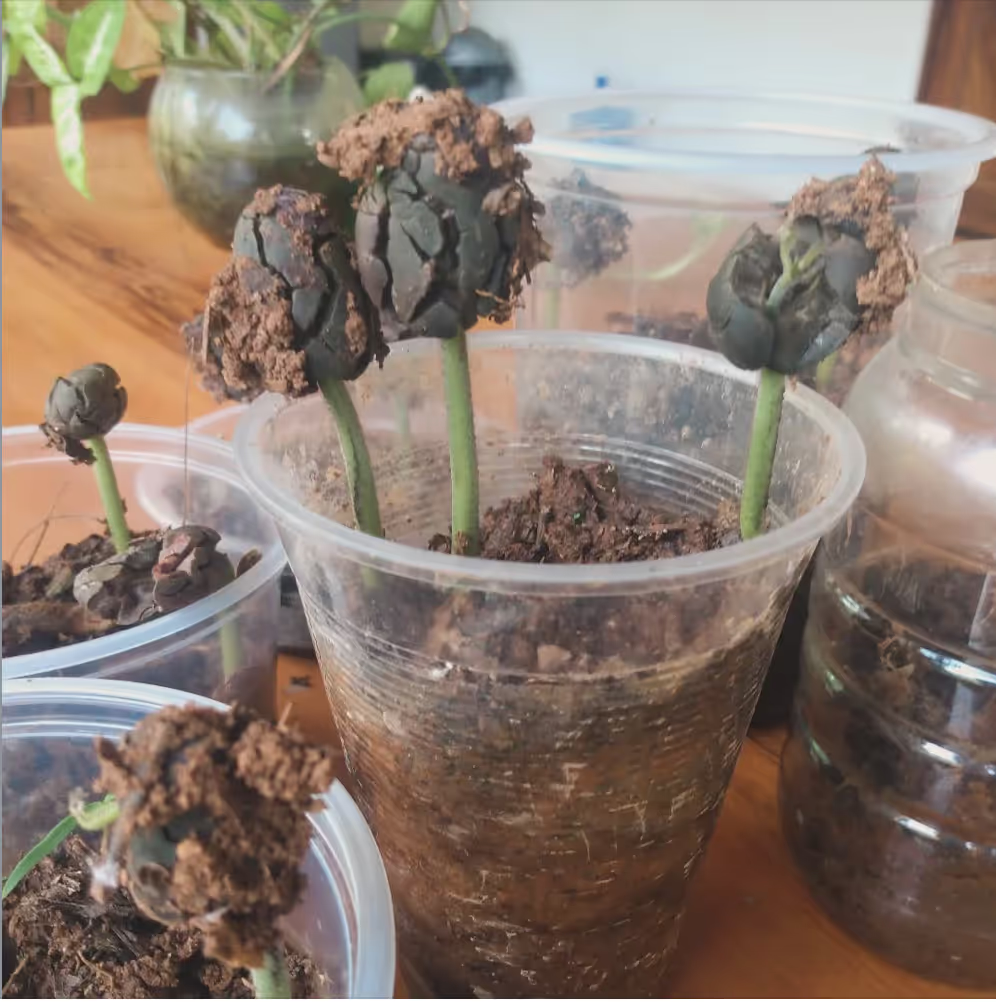
Exciting update: The day after our interview Ligita took a harrowing 4x4 trip to reach “this beauty“; that’s her description of the Guerrero bean. She texted, “It took me one year to find her tucked in the wild Guerrero mountains with the most beautiful family ever.” Ligita put this special bean to work in her first-ever workshop the following week and has subsequently sprouted several of these sacred seeds to see if they can grow right here in Troncones!
Links:
https://www.instagram.com/tribu_del_cacao
https://www.instagram.com/ligita.lape

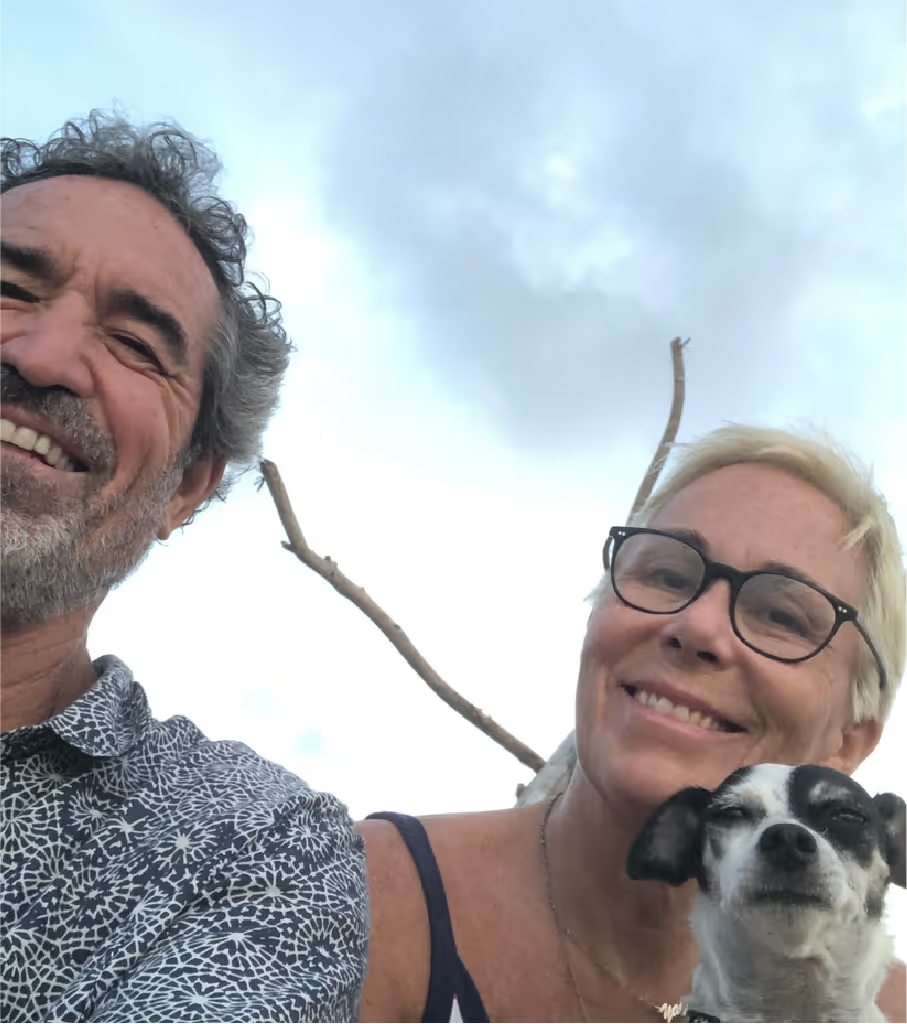
.avif)
